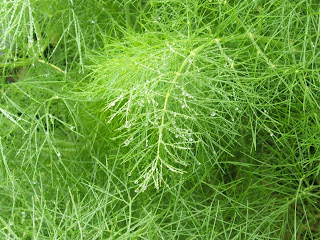.jpg)
The elder trees are just starting to come into bloom. Which means it will soon be time to make some elderflower cordial - yum! This fragrant cordial tastes to me like the very essence of wild, faery-magickal midsummer. Every year I make a batch and then vacillate between wanting to give some to everyone who visits so they can taste how gorgeous it is and jealously guarding my stash because I know it will be a whole year before I can make more.
To increase my supply I've been trying to cultivate some more elders in the garden but it's not been easy. Elders are regarded as weed trees by most folk. As such you'd think they grow like, well, weeds. But that doesn't seem to be the case. I've tried sowing elder seeds but they didn't germinate. I've hunted for self-sown elder seedlings but so far drawn a blank. My cuttings didn't root. In desperation I actually transplanted an elder seedling from a flower bed in my parent's garden in Essex and brought it back here to Wales. It made a good start - and was promptly strimmed to a stump by my husband, T. Optimistically, I put some protection around it and it sent up a few shoots, so I removed the protection - and T strimmed it again. This time I replaced the protection and left it, and the poor thing is once again sprouting, although I suspect I may have to wait a few years before it is up to any kind of flower production! In the meantime I have hunted in plant nurseries for additional elders, but as 'weeds', they just aren't available to buy (unless you want a highly expensive foreign species, sambuca nigra, which is admittedly very pretty, but just not what I want).
It makes me ponder just what it is that makes us designate one species desirable and another not? What is it that makes people struggle to grow, say, palm trees in the UK? Or roses in the desert? Why battle almost impossible odds to grow something somewhere it isn't suited to and doesn't want to be? (hmm, the irony of this juxtaposed against the previous paragraph has just struck me. But I'll carry on and hope no one else notices... ahem....) Sadly, I suspect it may be something to do with the perceived kudos of getting one over on Mother Nature. Perhaps in say, Antarctica or sub-Saharan Africa, elders are the last thing in chic gardening circles. (And while we're on the subject of gardening insanity, what is this obsession with grass? I have known people literally crawl around their garden trimming the lawn with nail scissors, just to get that 'velvet bowling green' look - but never actually set foot on it in order to preserve the perfection. I thought the whole point of growing a lawn was that grass is hard wearing and therefore the perfect thing to walk on. But then, I like my lawn natural looking, complete with a good sprinkling of daisies, clover and dandelions. Perhaps it's just me.)
But back to the noble elder, which 'weed' or not, has much to recommend it. Elders are pretty, don't take up too much space, their flowers and fruits benefit wildlife as well as having many culinary uses, the twigs can be used to make whistles, the leaves deter biting insects, and the berries are one of the few effective natural anti-viral medicines we have. And that's just for starters! OK, the leaves do smell a bit unpleasant, but you can't have everything.
Elders also have a rich folklore - from the Hilder-moer (Elder Mother) spirit who lives in and protects the tree to it's association with the fairies. There is a great article about the folklore and uses of the Elder by Glennie Kindred here: http://www.whitedragon.org.uk/articles/elder.htm
So by now I bet you're all desperate for a fragrant, refreshing glass of chilled elderflower cordial! If you are lucky enough to live somewhere with plenty of elderflowers, here's the recipe - give it a go. Just remember to leave enough blossoms for the insects and birds to enjoy.
Recipe for Elderflower Cordial:
Ingredients:
12-15 sweetly scented umbels of elderflower (thick stalks removed)
900g/2lbs sugar
1 lemon, sliced
32g/1.15oz citric acid
Method:
Pour 1 litre/1.75 pints boiling water over the ingredients in a large earthenware bowl. Stir well to dissolve sugar. Cover with a clean cloth and leave for 3 days. Stir well each morning and evening, being careful to replace cover.
Pour into small sterilised bottles and seal, or freeze in ice cube bags to use as required.
To use:
Dilute with water, add ice cubes and maybe a slice of lemon. Find a beautiful spot in the garden and toast the magical elder - cheers (or as they say in these parts, Iechyd Da!)!








